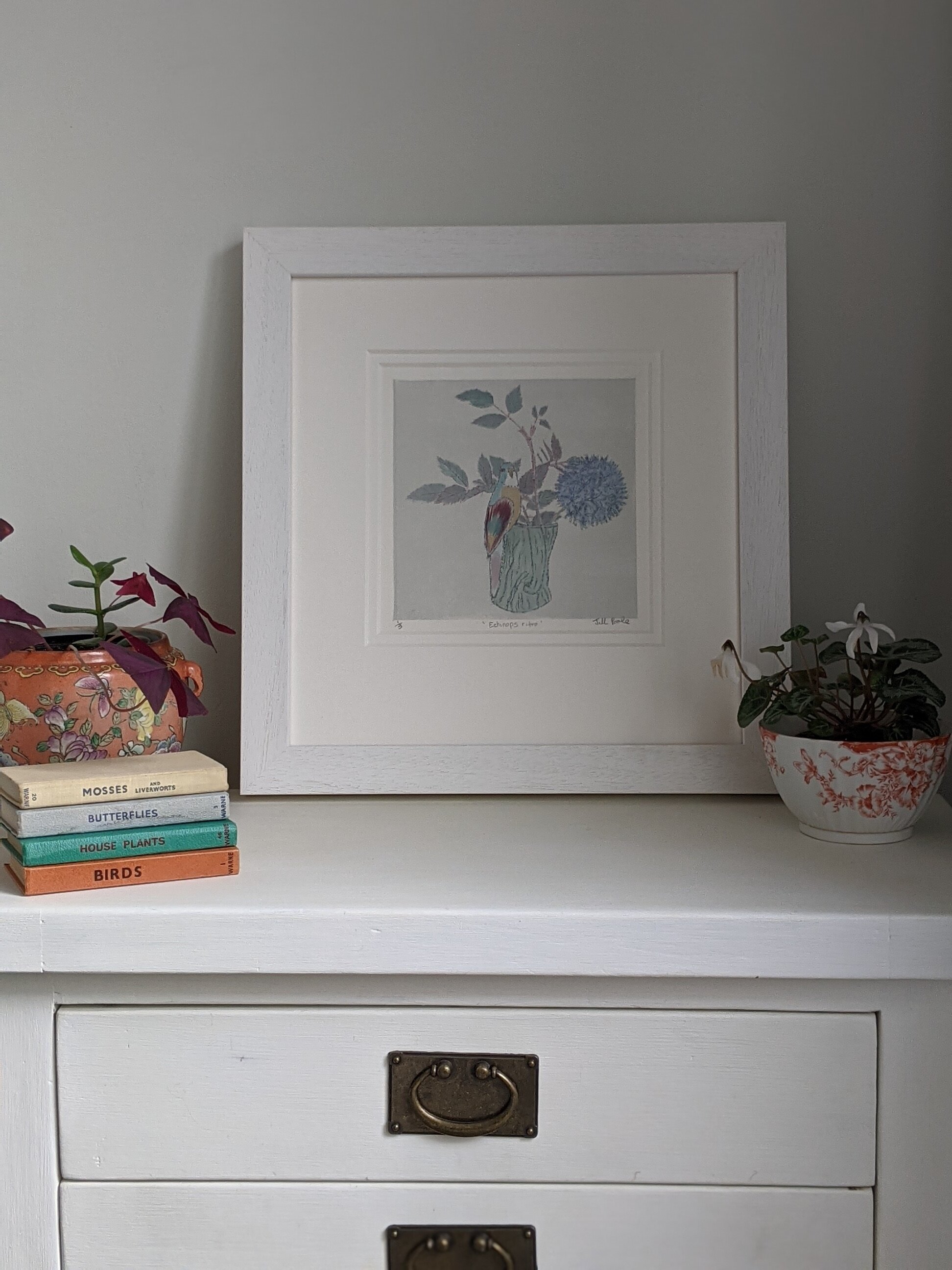 Image 1 of 3
Image 1 of 3

 Image 2 of 3
Image 2 of 3

 Image 3 of 3
Image 3 of 3




On the Mantlepiece Series - Echinops Ritro.
23.21 x 21.89 cm
A vase containing plants ‘perfect for pollinators’ sits proudly on the mantlepiece amongst other beautiful and important objects.
This ever-popular perennial, attracts hoards of insects, including bees, moths and butterflies, and the seeds provide food for finches and other seed-eating birds.
Perfectly round balls of small, intense, deep-blue flowers sit on straight stems that pop up from a thick clump of long, thistle type (but not very prickly) leaves.
Plant in full sun or partial shade in poor, well-drained soil, and cut down to the ground after flowering to encourage a second flush of flowers.
You can lift and divide congested colonies in autumn or spring.
This is an original drypoint etching.
This artwork is sold unmounted and unframed.
23.21 x 21.89 cm
A vase containing plants ‘perfect for pollinators’ sits proudly on the mantlepiece amongst other beautiful and important objects.
This ever-popular perennial, attracts hoards of insects, including bees, moths and butterflies, and the seeds provide food for finches and other seed-eating birds.
Perfectly round balls of small, intense, deep-blue flowers sit on straight stems that pop up from a thick clump of long, thistle type (but not very prickly) leaves.
Plant in full sun or partial shade in poor, well-drained soil, and cut down to the ground after flowering to encourage a second flush of flowers.
You can lift and divide congested colonies in autumn or spring.
This is an original drypoint etching.
This artwork is sold unmounted and unframed.
23.21 x 21.89 cm
A vase containing plants ‘perfect for pollinators’ sits proudly on the mantlepiece amongst other beautiful and important objects.
This ever-popular perennial, attracts hoards of insects, including bees, moths and butterflies, and the seeds provide food for finches and other seed-eating birds.
Perfectly round balls of small, intense, deep-blue flowers sit on straight stems that pop up from a thick clump of long, thistle type (but not very prickly) leaves.
Plant in full sun or partial shade in poor, well-drained soil, and cut down to the ground after flowering to encourage a second flush of flowers.
You can lift and divide congested colonies in autumn or spring.
This is an original drypoint etching.
This artwork is sold unmounted and unframed.